Effects of Five Food Materials on the Abundance of Gut Microbiota and Fecal Short-Chain Fatty Acids in High-Fat Diet-Induced Obese Rats
FU Jinfeng, TAN Simin, TU Shiyun, WANG Juan,*, SHENG Ou
(1. School of Food Science and Engineering, South China University of Technology, Guangzhou 510641, China;2. Key Laboratory of South Subtropical Fruit Tree Biology and Genetic Resource Utilization, Ministry of Agriculture and Rural Affairs,Guangdong Province Key Laboratory of Tropical and Subtropical Fruit Tree Research, Institute of Fruit Tree Research,Guangdong Academy of Agricultural Sciences, Guangzhou 510640, China)
Abstract: Although banana powder (BP), konjac powder (KP), resistant dextrin (RD), corn starch (CS) and L-carnitine(LC) have been reported for their anti-obesity properties, their effects on the gut microbiota and its metabolites, and the differences in anti-obesity mechanisms related to the gut microbiota are still unknown. In this study, high-throughput sequencing and high performance liquid chromatography (HPLC) were used to detect the gut microbiota profile and the amount of short-chain fatty acids (SCFAs) in the feces of high-fat diet-induced obese rats, respectively. Results showed that the probiotic genera Ruminococcus_2, Coprococcus_2 and Ruminiclostridium_5 were the main bacterial genera in the CS, BP and RD groups, respectively. Spearman correlation analysis and canonical correlation analysis (CCA) demonstrated that glucolipid metabolism parameters were related to changes in the gut microbiota. The relative contributions of soluble dietary fiber-rich diets (konjac powder and resistant dextrin) and insoluble dietary fiber (resistant starch)-rich diets (banana powder and corn starch) to producing SCFAs were equivalent, and greater than that of L-carnitine (LC). The ability of the five materials to promote the growth of probiotics and inhibit the proliferation of harmful bacteria in the gut was in the decreasing order of RD > BP > CS > KP, and the ability to increase fecal SCFAs was in the decreasing order of BP > RD >CS > KP, while LC showed little effect on the gut microbiota or SCFAs. CCA analysis showed that the degree of correlation between glucolipid metabolism parameters and the intestinal microbial community decreased in the following order: blood glucose (GLU) > high-density lipoprotein cholesterol (HDL-C) > total cholesterol (TC) > low-density lipoprotein cholesterol(LDL-C) > triacylglycerol (TG). Spearman correlation analysis showed that Ruminococcus_2 was positively correlated with butyrate content, and Escherichia.Shigella was positively correlated with the contents of acetate, butyrate and total SCFAs.
Keywords: food materials; gut microbiota; correlation analysis; short chain fatty acids; obesity
Obesity is defined as a chronic disease characterized by massive accumulation of fat in the body with adverse effects on the organs. The major determining factors driving obesity are complex, but closely related to our living environment, particularly human behavior and socioeconomic status. Dietary patterns are changed drastically,which leading to many health problems. At the same time,with the development of economy, the reductions in exercise and sedentary behavior have become habits. Long-term unhealthy lifestyle increases the prevalence of obesity, which becomes a critical public health concern worldwide. It is estimated that by 2030, 2.16 billion adults will be overweight and 1.12 billion will be obese. Individuals with obesity are associated with a variety of health problems and involved in higher morbidity of cardiovascular disease, cancer and diabetes, causing the consequences of an impaired quality of life. Hence, weight loss is a realistic strategy for preventing and reducing the risk of disease progression.
Gut microbiota, a significant role in the physiological processes of the host, such as nutrient digestion, absorption,energy utilization and storage, and metabolism, acts as an“organ” containing of bacteria that distributed mostly in the colon. The colonization patterns of the microbes in our gut are key player in health and provide unique biomarkers for the identification of the physiological state of each individual. The gut microbiota is a dynamic ecosystem and produces short-chain fatty acids (SCFAs) through fermentation to protect the integrity of the intestinal barrier.It is widely believed that SCFAs, the major end products of fermentation by human colon bacteria, could regulate proliferation and differentiation of colonic epithelial cells and have vital impacts on host health. Obesity will alter the composition and relative abundance of gut microbes.Nowadays, 16S rRNA amplicon sequencing technology has become an important method to study the complex microbial community composition in environmental samples.Therefore, the role of intestinal microbiota in the obesity and anti-obesity process was investigated in this study.
Banana powder, corn starch, konjac powder, resistant dextrin and-carnitine, these five food materials represented three types of ingredients, respectively. Insoluble dietary fiber (resistant starch) types: green banana powder, corn starch; soluble dietary fiber (glucan) types: konjac powder,resistant dextrin;-carnitine (commonly used for weight loss functional food). Green banana and corn are rich in natural resistant starch. Resistant starch is defined as the sum of the starch and products of starch degradation not absorbed in the small intestine of healthy individuals. Resistant starch as a potential therapeutic agent in human gastrointestinal and inflammatory diseases, shows a prebiotic effect that promotes the growth of beneficial microbes in the gut and increases SCFAs concentrations. Banana resistant starch(BRS) belongs to RStype and is the main ingredient of green banana powder, which comprises approximately 50%of unripe banana pulp (dry base). Corn starch, derived from high-amylose maize, is partly resistant to digestion by enzymes in the small intestine. Resistant dextrin and konjac glucomannan are soluble dietary fiber. Dietary fiber is considered as a nutritional supplement in our daily life. It has a beneficial effect on weight loss, cardiovascular disease and colonic health, played a role in modulating human metabolism. Resistant dextrin, glucose linked byand(1→2), (1→3), (1→4), (1→6), is formed by gelatinization of wheat or corn starch. Konjac powder is isolated from the tubers of, and its main component is konjac glucomannan.-carnitine has been widely exploited to treat obesity. The anti-obesity mechanism of-carnitine may be to stimulate fat oxidation and increase energy consumption to reduce body fat.
Banana powder, corn starch, konjac powder, resistant dextrin and-carnitine were reported to have the ability to mitigate obesity and modulate bacterial composition.Recent studies showed that BRS led to a significantly lowerandratio and a significantly higher in the relative abundance of Rikenellaceae. Moreover, the consumption of BRS increased the concentration of butyric acid and total SCFAs dramatically. The obese mice fed with corn starch for 6 weeks were enrich in Bacteroidetes(S24-7 family) and Firmicutes (Lactobacillales and Erysipelotrichaceae), indicating corn starch could alter the intestinal microbiota. Konjac powder supplementation could not only reduce the gains in weight but also increase the abundance of Aerococcaceae, reduce that of. Resistant dextrin has been demonstrated to modulate microbiota composition in rats, increasing the counts ofandstrains, and decreasing that ofandstrains.-carnitine, although showed some promise that helps weight loss, but large doses orally ingested of-carnitine may show a negative impact on gut microbiota, enhancing the production of trimethylamine--oxide (TMAO)and promoting the probability of atherosclerosis,wherefore disastrously limiting its application. Thus, the exploitation of safer anti-obesity functional foods was of substantial significance.
Our daily diets are made up of multi-component foods,rather than purified resistant starch or dietary fiber. Thus,studying different food material is important for health research and benefit for the functional food field. The antiobesity mechanisms of banana powder, corn starch, konjac powder, resistant dextrin and-carnitine are not completely clear. In this study, high-fat diet-induced obese rats were fed with these five materials, the composition of gut microbiota,the content of SCFAs and their specific mechanisms related to intestinal flora were analyzed. Therefore, this research aim to make a comprehensive study on different food materials mechanistic roles for weight loss.
1 Materials and Methods
1.1 Animals, materials and reagents
Male Sprague-Dawley rats ((100−110) g, 6 weeks old) were purchased from Guangdong Medical Laboratory Animal Center (GDMLAC, Guangdong, China) with the laboratory animal license number SCXK (Guangdong) 2013-0002. The normal chow diet (55% nitrogen-free extract,18% crude protein, 10% water, 8% ash, 4% crude fat, 5%crude fiber, 1.8% calcium and 1.2% phosphorus, with total calorific value 1 371.29 kJ/100 g) was obtained from Jiangsu Xietong Pharmaceutical Bioengineering Co., Ltd. (Jiangsu,China). A high-fat diet (64% normal control diet, 15.0%lard, 15.0% sucrose, 5% casein, 0.6% calcium hydrogen phosphate and 0.4% stone powder, with total calorific value 1 694.60 kJ/100 g) was obtained from Guangdong Medical Laboratory Animal Center (Guangdong, China).
Banana powder Natural Banana Healthy Food Co.,Ltd., (Guangdong, China); Konjac powder Wanbang Industry (Henan, China); Resistant dextrin Zhongtai Food Additive Co., Ltd. (Henan, China); Corn starch Ingredion Co., Ltd. (Chicago, USA);-Carnitine BY-HEALTH Co., Ltd. (Guangdong, China); Orlistat (approval number H20123131 and orlistat content, 0.12 g/capsule) Zhien Pharmaceutical Co., Ltd. (Chongqing, China). All products were stored cool and dry at room temperature following the manufacturer’s instructions.
1.2 Instrumental and equipment
Light Cycler Nano Fluorescence quantitative polymerase chain reaction (PCR) instrument Roche, United States;Nano Deop 1000 Micro UV spectrophotometer Thermo Scientific, United States; NovaSeq PE250 Illumina NovaSeq sequencing platform Nuohe Zhiyuan Technology Co., Ltd.Beijing, China; Essentia LC-15C High-performance liquid chromatography (HPLC) SHIMADZU, Japan.
1.3 Methods
1.3.1 Determination of nutritional components of five food materials
The nutritional ingredients of five food materials were analyzed by following methods. Resistant starch content were determined by AOAC 2002.02 AACC 32−40 method resistant starch assay kits; Total dietary fiber (TDF) were determined by method GB 5009.88-2014; Protein content was determined by Kjeldahl method in GB 5009.5-2016,using 6.25 factor for all samples to calculate content of protein; Moisture content was determined by constant weight method in GB 5009.3-2016; Fat was determined by Soxhlet abstracting method in GB 5009.6-2016; Ash was determined by combustion method in GB 5009.4-2016.
1.3.2 Animals experimental design
All animals were raised in the specific pathogen-free(SPF) experimental animal room (constant temperature(21 ± 2) ℃, relative humidity (50 ± 10)% and a 12-h lightdark cycle) of the Experimental Animal Center of South China Agricultural University with free access to water and food. According to the method of weight loss function in Annex 8 issued by the Food and Drug Administration of China, the protocol and design of the animal experiment was showed in Fig. 1. Fecal samples were collected once a week during this period and stored at −80 ℃ until analysis.After 6 weeks of the experiment, all rats were fasted for 12 h and sacrificed with an intraperitoneal injection of 10% chloral hydrate. The intestinal tract contents were quickly removed and immediately frozen in liquid nitrogen after collection and stored at −80 ℃ until analysis.

Fig. 1 Animal experimental design
1.3.3 DNA extraction and sequencing
The process of DNA extraction and sequencing of intestinal samples (= 3) and the bioinformatics analysis were the same as the previous method. Alpha diversity,beta diversity, species distribution and correlation analysis were performed on the sequencing data.
1.3.4 SCFAs measurements in feces
The liquid-liquid extraction, HPLC-combined with ultraviolet (UV) analysis and gradient elution refer to the work of De Baere et al.and made appropriate modifications. Six grams of rat feces was placed in a centrifuge tube and diluted with 20 mL of deionized water.The contents were centrifuged at 3 000 r/min for 10 min. The supernatant was collected and added to 3 mL of ether and 0.1 mL of concentrated HCl. The mixture was mixed with a vortex and then centrifuged at 3 000 r/min for 10 min again.Then, the ether was replaced with 1 mL of 1 mol/L NaOH,and the same steps were repeated. The sample was filtered with a 0.22 micron micropore membrane. SCFAs were quantitatively analyzed using HPLC on an Acclaim 120 Cliquid chromatography column (4.6 mm × 250 mm × 5 μm)under the following conditions: flow rate, 1 mL/min;detection wavelength, 210 nm; column temperature, 30 ℃;sampling quantity, 10 μL; and flow phase, phosphoric acid buffer solution, pH 2.86 (A), and acetonitrile (B).
1.4 Statistical analysis
The data are shown as the mean value ± standard deviation. Statistical analysis was implemented using a one-way analysis of variance (ANOVA) followed by least significance difference post hoc test to determine the difference between groups. The results were considered significant difference when< 0.05. Analyses were performed using SPSS Statistics 24.0.
2 Results and Analysis
2.1 Nutritional components of five food materials
The main components of five food materials were shown in Table 1. Banana powder and corn starch are rich in resistant starch (58.20% and 28.95%, respectively);Konjac powder and resistant dextrin are rich in total dietary fiber (41.80% and 90.00%, respectively); While the main component of-carnitine is carnitine (22%).

Table 1 Nutritional components of five food materials
2.2 Alpha diversity analysis
Alpha diversity analysis was calculated on the basis of operational taxonomic units (OTUs) and presented in Table 2.The Good’s coverage of each group reached more than 0.99. The observed species, Chao1 and ACE index were not significantly different among groups, but the Shannon and Simpson index were significantly lower in CS group when compared with the NC group (< 0.05). It was observed that there was no difference in species richness in different groups, and samples from the NC group showed the highest bacterial community diversity, while the lowest uniformity was observed in the CS group.
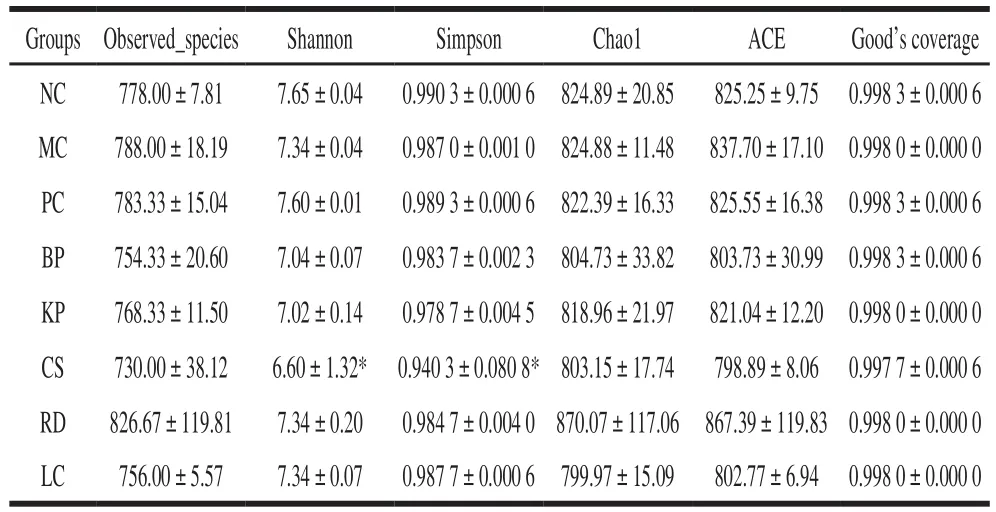
Table 2 Alpha diversity analysis of gut microbiota in different groups
2.3 Beta diversity analysis
An obvious separation of microbiota communities was revealed by the principal co-ordinates analysis (PCoA) plot(Fig. 2A). A significant community separation was adverted among NC, PC and LC groups, suggesting that the group difference of intestinal flora was greater than individual difference. The plot also showed that the cluster effect of CS group was poor.
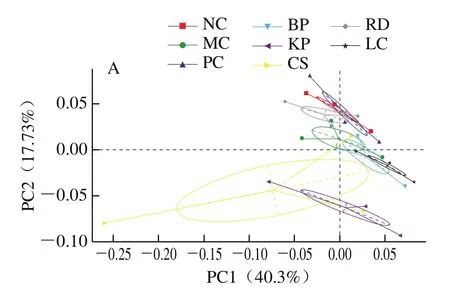

Fig. 2 Beta diversity of gut microbiota in different groups
As shown in Fig. 2B, the presence and diversity of the species were examined in beta heatmap (weighted_UniFrac index). Compared with the other groups, the deepest yellow region was more concentrated in the CS and KP groups, and the order of CS > KP > RD > LC > BP was observed when compared with the MC group (the difference coefficients were 0.113, 0.112, 0.082, 0.080, 0.075, respectively), implying that the CS and KP groups were relatively independent. UPGMA cluster analysis showed that PC and RD groups were close to NC group; LC and BP, KP and CS groups had obvious cluster(Fig. 2C). It was implied that intervention with different food materials could alter the overall structure of the gut microbiota,where the RD group presented an approximative gut flora composition toward NC group.
2.4 Relative abundance of gut microbiota
To provide a better comprehension of the differences in the intestinal bacteria in response to five food materials treatment, the bacterial species and abundance were determined at the phylum and genus levels among groups.In total, 21 phyla, 47 classes, 69 orders, 131 families, 271 genera,98 species and 1 616 OTUs were detected in this research.
Collectively, the top 10 phyla of relative abundance in different groups were Firmicutes, Bacteroidetes,Proteobacteria, Verrucomicrobia, Tenericutes,Actinobacteria, Cyanobacteria, Deferribacteres, Spirochaetes and Fibrobacteres. The bacterial composition was dominated by Firmicutes ((65.18 ± 7.89)%), Bacteroidetes((24.12 ± 6.59)%) and Proteobacteria ((5.64 ± 3.24)%),whereas minor phyla were Spirochaetes and Fibrobacteres(Fig. 3A). It was clear that the CS group had a major reduction in the relative abundance of Firmicutes when compared with the MC group (< 0.05) (Table 3). Although the difference was not significant, the relative abundance of Bacteroidetes and the Bacteroidetes/Firmicutes ratio (B/F) in BP, KP and LC groups had a slight increase in comparison with the MC group. Meanwhile, compared with the MC group, the relative abundance of Proteobacteria in KP group was significantly enhanced (< 0.01) (Table 3); The relative abundance of Cyanobacteria in BP and KP groups and Verrucomicrobiaceae in CS group had a mild increase, which failed to reach a significant level (Fig 3A and Table 3).
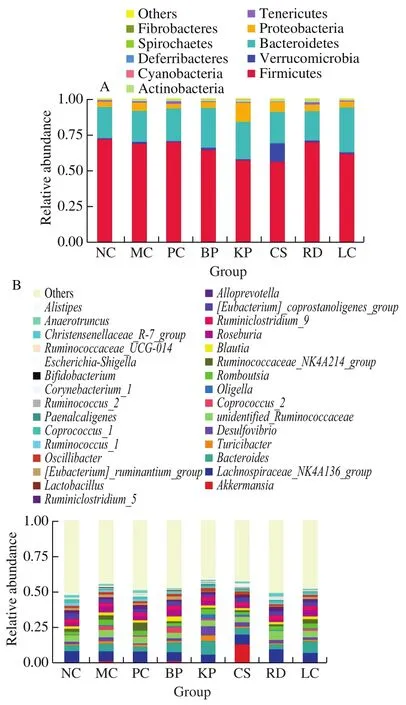
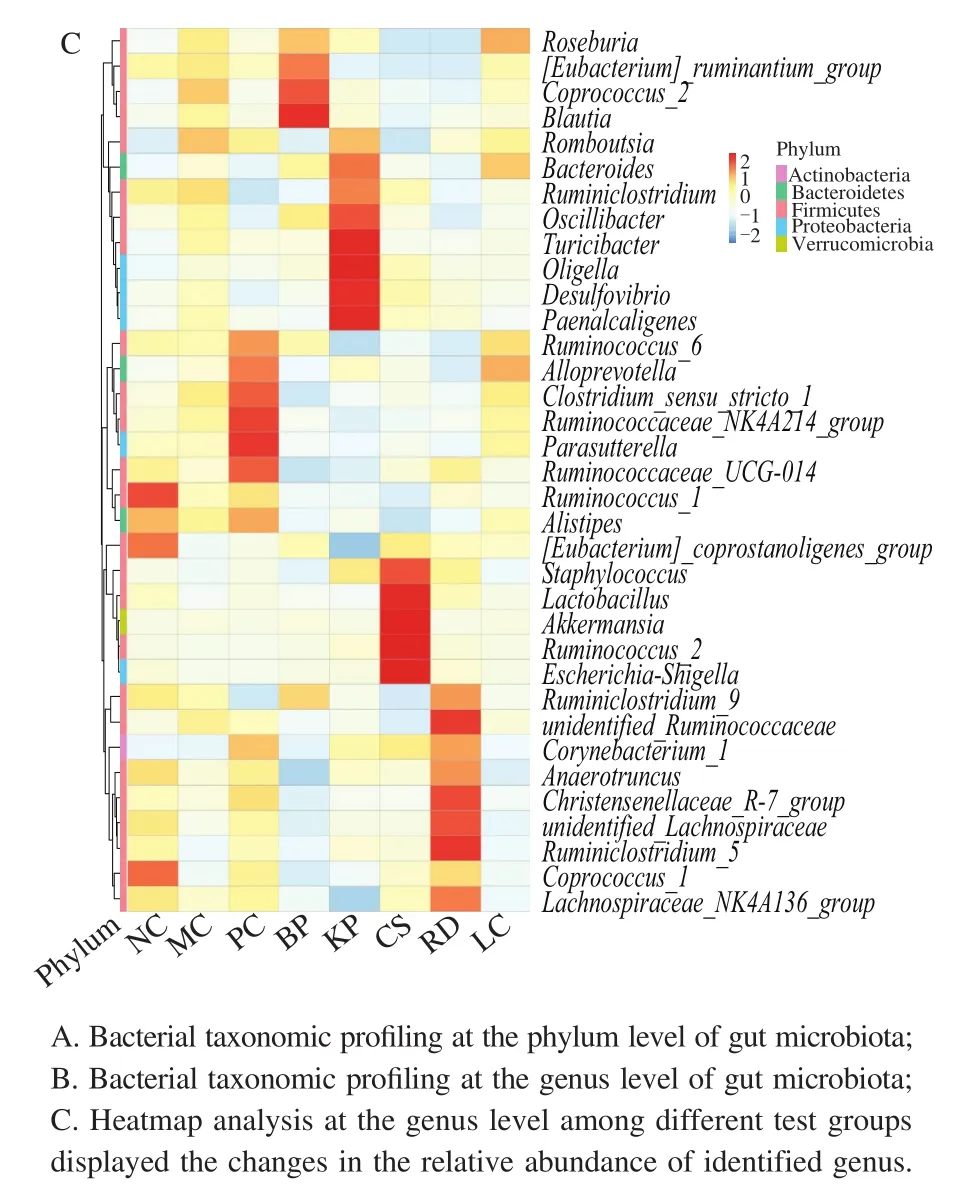
Fig. 3 Relative abundance of gut microbiota at the phylum and genus levels

Table 3 Relative abundance of microbial taxa at the phylum and genus levels%
The top 10 genera of relative abundance in different groups were,,,,,,,,and(Fig. 3B). The relative abundances ofandwere higher in response to BP group;,,,andwere higher in response to KP group;,,andwere higher in response to CS group;,,andwere higher in response to RD group;andwere higher in response to PC group (Fig. 3C and Table 3).
2.5 Food materials modulated the key phylotypes of gut microbiota
Linear discriminant effect size analysis (LEfSe) was able to search for biomarkers with statistically significant differences from group to group and applied to determine characteristic bacteria in each group. The results revealed that KP group was rich in Proteobacteria, LC group was markedly enhanced in,and BP group was characterized by a greater increase in the abundance ofand(Fig. 4A, B). However, there was no significant change in the CS and RD groups.

Fig. 4 LEfSe analysis of gut bacteria in different groups
2.6 Association between obesity-related biological parameters and gut microbiota
Spearman correlation analysis was applied to assess the potential association between the alteration of the intestinal flora and the obesity-related biochemical indicators(for detailed biochemical indicators, please refer to [27])to identify whether there was a correlation between gut microbiota and host metabolism. The results showed thatandwere positively associated with blood glucose (GLU).,,,andhad a positive relationship with triacylglycerol (TG), total cholesterol (TC)and low density lipoprotein-cholesterol (LDL-C) level, and had a negative correlation with high density lipoproteincholesterol (HDL-C) level.andwere negatively correlated with TG,TC and LDL-C level, while they were positively related to HDL-C level (Fig. 5A-E).
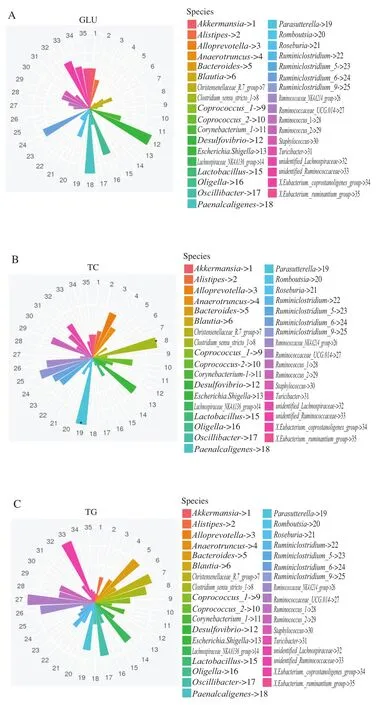

Fig. 5 Association between obesity-related biological parameters and gut microbiota
CCA analysis was performed to reflect the possible relationship between microbial community structure and environmental factors. The length of an environmental factor arrow in the ordination plot indicated the strength of the relationship of that factor to community composition.Fig. 5F showed that the degree of correlation between glucolipid metabolism parameters and microbial community was GLU level > HDL-C level > TC level >LDL-C level > TG level, where GLU appeared to be the most important environmental driver.
To sum up, GLU level of KP and CS groups, HDL-C level of RD group, TC level of MC, LC and BP groups,LDL-C level of LC and PC groups, as well as TG level of NC group were impacted by intestinal flora more.
2.7 Fecal SCFAs
The consumption of the five food materials on the production of the major SCFAs (acetate, propionate,butyrate) in the feces were measured (Table 4). The total SCFAs concentration was calculated as the sum of these three SCFAs. Compared with the NC group, the concentration of acetate, propionate and the total concentration of fecal SCFAs in MC group was significantly reduced (< 0.05), the results demonstrated that the high-fat diet could significantly change the content and SCFAs pattern in obese rats. Total concentration of fecal SCFAs in the PC, BP, KP, CS and RD groups was increased significantly when compared with MC group (< 0.05), indicating that BP, KP, CS and RD could promote the production of total SCFAs. Notably, rats in the RD group had the highest total SCFAs concentration(< 0.05). The content of acetate in the BP, KP, CS and RD groups was significantly higher than that in the MC group (< 0.05). The content of propionate in BP group was significantly higher than that in the MC group (< 0.05).The content of butyrate in the RD group was the highest, and there was a significant difference compared with the MC group (< 0.05). The butyrate content also increased in the BP, KP, CS and LC groups, whereas there was no significant difference compared with the MC group. Gut bacteria could produce SCFAs by fermenting resistant starch or dietary fiber, thus the resistant starch or dietary fiber diet might boost the production of SCFAs by increasing the abundances of SCFAs producing bacteria in obese rats.

Table 4 Fecal contents of SCFAs μmol/mL
The relationship of the five food materials on the intestinal flora and SCFAs was discussed. The results showed that the content of acetate was positively associated with, while negatively correlated with,,,and. The content of propionate had a negative correlation with,,. The content of butyrate was positively related toand, negatively correlated with. The content of total SCFAs had a positive correlation withand, while negatively correlated with,,and(Fig. 6A).
The correlation of the SCFAs and biological parameters showed no significant effects in this research (Fig. 6B).
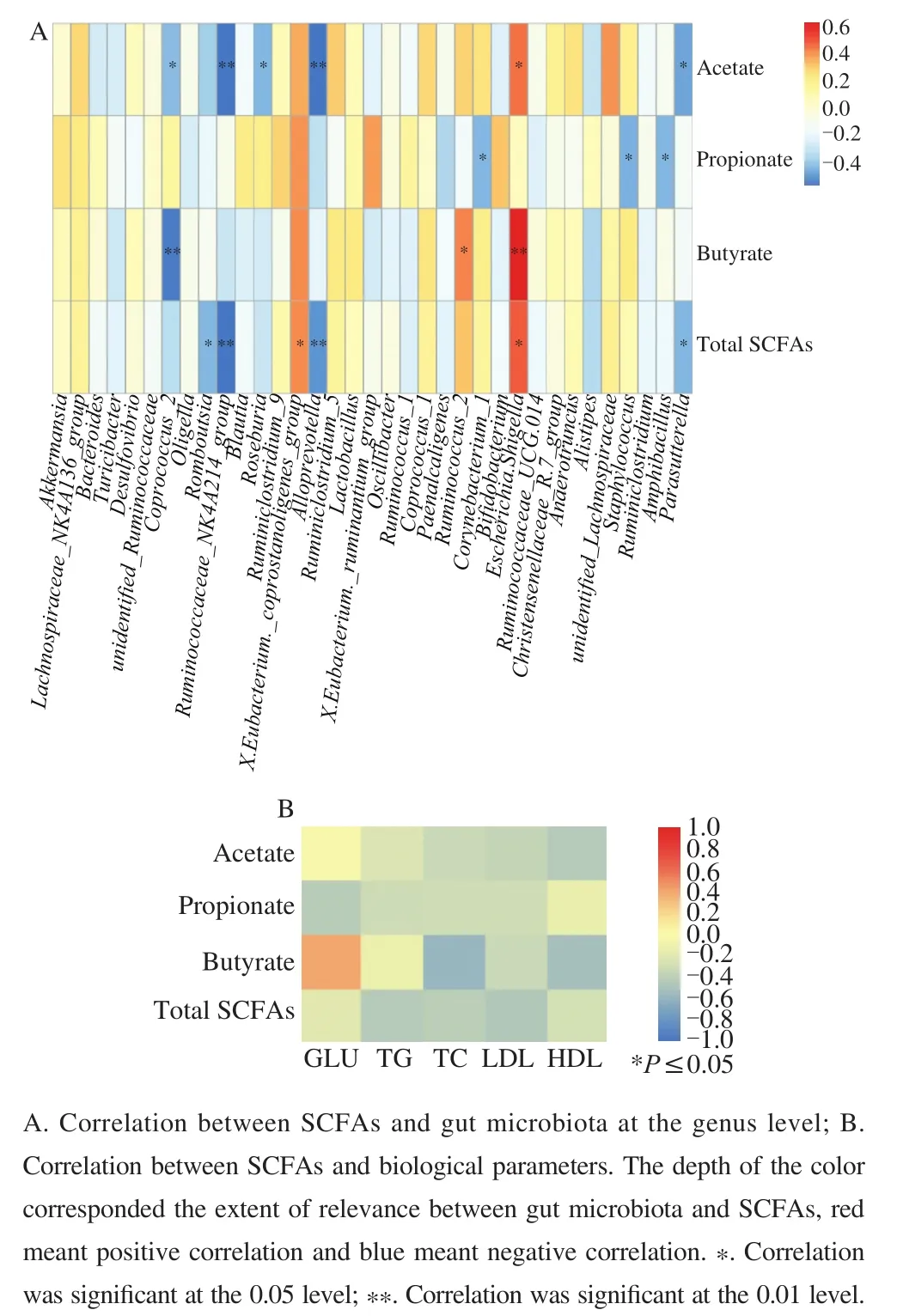
Fig. 6 Spearman correlation analysis
3 Discussion
The five food materials in this study could be classified into the following three categories: 1) resistant starch: banana powder and corn starch; 2) soluble dietary fiber: konjac powder and resistant dextrin; 3) fat burner:-carnitine. These non-digestible carbohydrates differ in structure and physical properties, which may determine the fermentation by specific intestinal flora. Therefore, this research focused on the healthy benefits of different food materials and aimed to explore the potential anti-obesity mechanism of food material by adjusting the gut flora composition.
Enzymatically resistant carbohydrates are a broad category, covering resistant starches, dietary fibers and non-starch polysaccharides. These carbohydrates displayed resistance to digestion under the simulatedconditions implying they might reach the colon to be fermented by gut flora. This phenomenon possibly due to their structure and physicochemical properties (molecular weight, viscosity, and glycosidic linkage). Growing data proved this point, as follows, there were different responses of human intestinal microorganisms to starch and nonstarch polysaccharide diets, Ruminococcaceae increased in resistant starch (RS) diets, while Lachnospiraceaeincreased in non-starch polysaccharides (NSP) diets. On the other hand, fucoidan, potential prebiotics, showed a structuredependent way in the host health. It could balance the composition of gut microbiota by inhibiting opportunistic pathogens () and increasing beneficial bacteria(and Ruminococcaceae). Based on this background, it was essential to confirm the specific bacteria in different food material treatments.
In the current report, at the phylum level, all groups had the same species composition but the relative abundance of these phyla varies among groups. The dominated microbiota in human contains four phyla: Actinobacteria, Firmicutes,Proteobacteria, and Bacteroidetes. Previous report had been showed that the relative abundance of Bacteroidetes was fewer, the relative abundance of Firmicutes was higher and the ratio of Bacteroidetes to Firmicutes was lower in obese individuals than these in healthy individuals. CS group significantly decreased the Firmicutes levels (< 0.05), the relative abundance of Bacteroidetes and the Bacteroidetes/Firmicutes ratio in BP, KP and LC groups had a slight increase. It is worth noting that the proportion of bacteria had also changed with the different interventions. Proteobacteria was rich in KP group (< 0.05), Cyanobacteria in BP and KP groups and Verrucomicrobiaceae in CS group also had a mild increase. Proteobacteria is a major phylum, including a large number of pathogenic bacteria. Furthermore, in obese mice, an increased proportion of Proteobacteria was observed. The enrichment of facultative anaerobic bacteria in Proteobacteria was a microbial characteristic of gut dysfunction. In recent years, the important role of gut microbes in human immune system has attracted much attention. Meanwhile, relevant study had shown thatpolysaccharides could increase the proportion of Verrucomicrobiaceae, which were elucidated to have a positive association with immune response. Recent studies have shown that Cyanobacteria have anti-inflammatory effects due to heightened interleukin 10 (IL-10) levels, and exogenous Cyanobacteria supplementation could retard blood glucose levels and lipid peroxidation.
At the genus level,was higher in BP group;andwere higher in CS group;andwere higher in KP group;was higher in RD group;were higher in LC group.Plant polysaccharides are the main substrate for the growth of, beneficial anaerobic bacteria (butyrateproducing bacteria) that exists in the human gut. The work of Huang et al showed thatwas negatively correlated with the inflammation marker IL-17A, implying that the increased abundance ofmay display better advantage in promoting host immune system. Some experiments demonstrated thatwas the human gut microbe with the strongest capacity to degrade resistant starch, especially RS. The abundance ofwill increase significantly in response to a diet with high resistant starch. Clinical studies have shown that the proportion ofin patients with inflammatory bowel disease and colorectal cancer has increased significantly compared to control, accumulating studies have indicated thatwas not only pro-inflammatory bacteria but also an opportunistic pathogen. The digestion and metabolism of nutrients (sugar, proteins and fats) in the human body provides a suitable intestinal environment for the growth of. In turn,may produce secondary metabolites that have a negative impact on the intestinal tract, such as HS and secondary bile acids, which could stimulate the development of adenomas and ultimately play a role in colorectal cancer. The current research onmainly focused on the urinary tract, but it could be isolated from wounds, making it an opportunistic pathogen.is a cellulosedegrading microorganism, which accumulates in the colon,and the enrichment ofis related to a healthier state. Numerous studies have demonstrated that Ruminococcaceae, the bacteria related to energy metabolism,was significantly increased contribute to the degradation of carbohydrates and favored the production of SCFAs.
Banana powder and corn starch belong to the RS type, the BP group (fed with banana powder) had higher relative abundance of,and, while the CS group (fed with corn starch)had higher relative abundance of,and, lower in. As food materials containing of resistant starch, banana powder and corn starch played a good role in adjusting the gut flora in obese rats, banana powder treatment obviously showed the advantages than corn starch group. Konjac powder and resistant dextrin belong to soluble dietary fiber, the RD group (fed with resistant dextrin) had higher relative abundance of, however,the KP group (fed with konjac powder) had higher relative abundance ofand, which are classified as. Unlike previous studies, in current research, konjac powder supplementation increased the abundance of harmful bacteria (and),implying that the evaluation of the safety and effectiveness of dietary supplements should be strengthened.
To sum up, the alterations in the composition of the gut microbiota caused by specific diets were interesting(RS diet:,,,,and; DF diet:,and), which indicated that the effects of DF diet on the proliferation of beneficial bacteria in the gut were not as good as RS diet.
It was widely believed that-carnitine may help weight loss by facilitating the transfer of long-chain fatty acids across the mitochondrial inner membrane as acylcarnitine esters and acting as an obligatory cofactor for β-oxidation of fatty acids. Interestingly, in this research, onlyphylotypes were enriched in the LC group and few other changes,suggesting that the anti-obesity mechanism of-carnitine may not resulted from the adjustment of intestinal flora.
The end-products of non-digestible carbohydrates fermented by gut microorganisms are mainly SCFAs,composed of acetic acid, propionic acid and butyric acid,which are the main energy sources of host bacteria. SCFAs are important for maintaining host health by enhancing the gut mucosal barrier function, reducing the levels of proinflammatory mediators, and stimulating the production of immunosuppressive cytokines. DF and RS are vital fermentation substrates of colonic microorganisms and data showed that RS fermentation is beneficial to butyrate production. Evidence suggested that RS was not as effective as DF in fecal bulking, and it seemed that the contributions of RS to fermentation were greater than that of DF. The results of this study represented that the relative contributions of DF and RS in producing SCFAs were equivalent, and the order of increasing SCFAs concentration was BP >RD > CS > KP > LC, indicating that dietary supplements based on non-digestible carbohydrates have a good effect in SCFAs production. It was worthy of our attention that the content of propionate and butyrate were lower than acetate.Fermentation mainly occurs in the proximal colon and SCFAs will be transported along the intestine by the motility of feces. The levels of SCFAs will decline along the large bowel(especially in the distal colon), especially propionic acid and butyric acid.
The effects of the five materials on the intestinal floraobesity-metabolites and their relationship were showed that the improvement of obesity-related biological parameters and the increase of short-chain fatty acid content were associated with beneficial changes in intestinal flora. In terms of biological parameters, CCA analysis showed that the degree of correlation between glucolipid metabolism parameters and microbial community was GLU > HDL-C > TC > LDL-C >TG, which implied that intestinal flora had the greatest impact on the GLU. While the relationship of the materials on the intestinal flora and SCFAs concentration was showed that the content of butyrate was positively correlated withand, which were the dominant bacteria in the CS group. The results revealed that there was a correlation between beneficial changes in the intestinal flora and the increase in SCFAs content, especially in butyrate, which was consistent with Topping’s work.
4 Conclusions
1) With respect to improving gut microbiota, RD was the most powerful material, followed by BP, CS and KP. 2)In regard to the SCFAs, BP showed the strongest benefits,followed by RD, CS and KP. The capacity of-carnitine on impacting intestinal flora and SCFAs was not significant.3) The degree of correlation between glucolipid metabolism parameters and microbial community was GLU > HDL-C >TC > LDL-C > TG in CCA analysis. 4) Spearman correlation analysis showed thatwas positively correlated with the content of butyrate, andwas positively correlated with the content of acetate,butyrate and total SCFAs.

